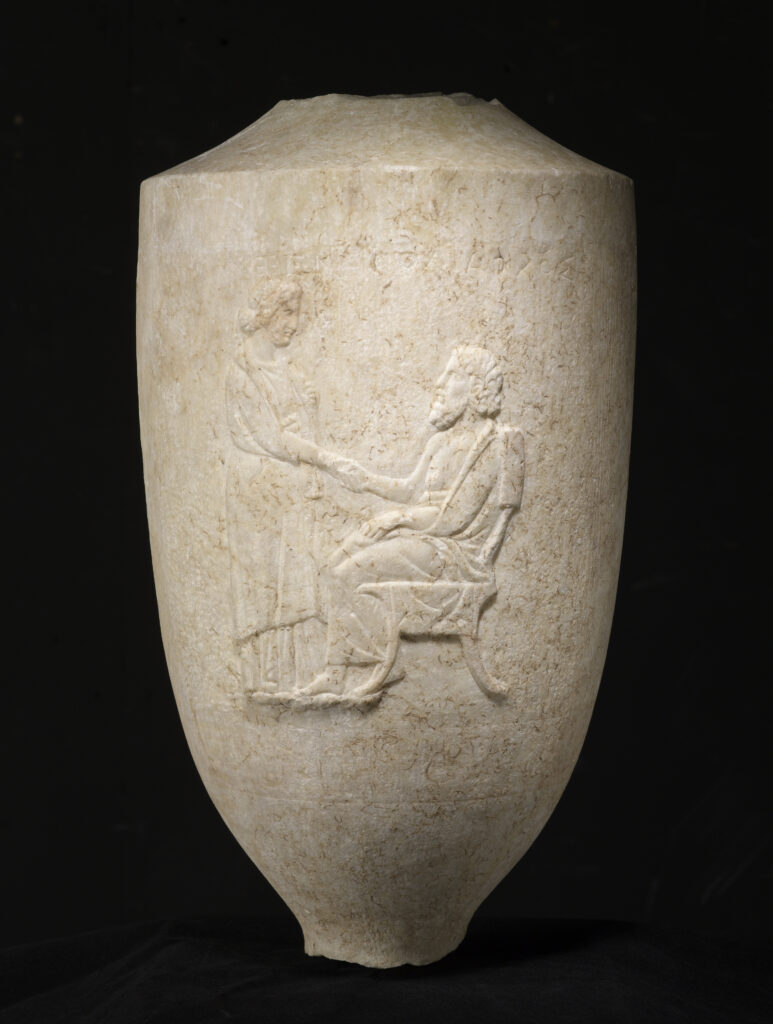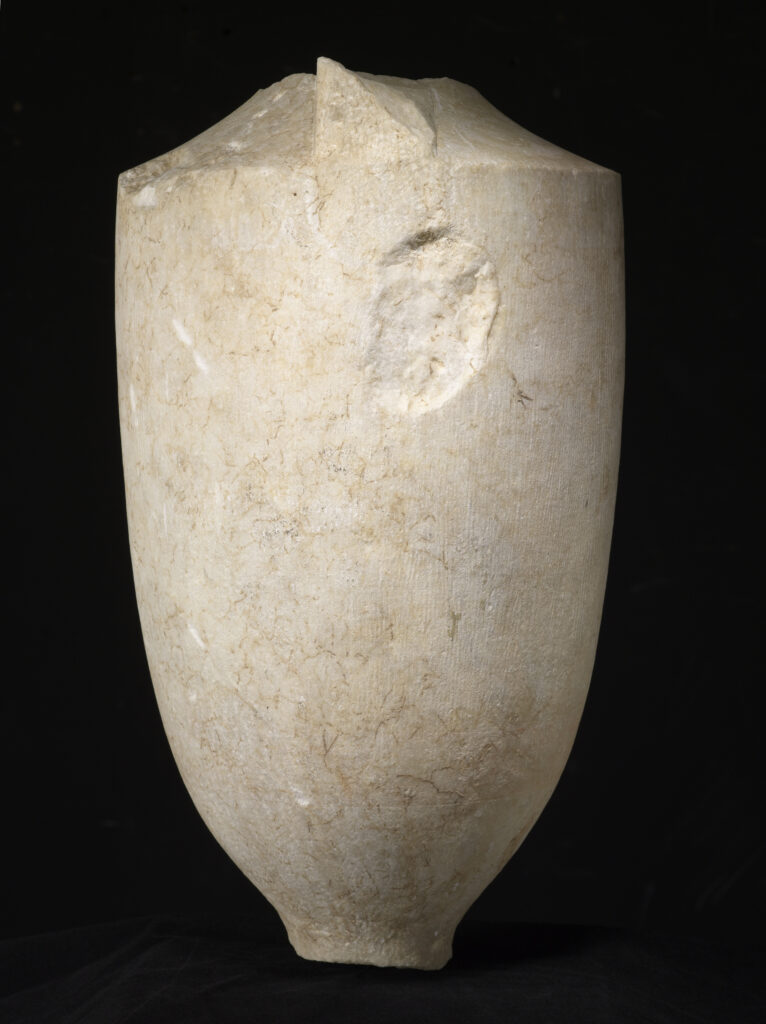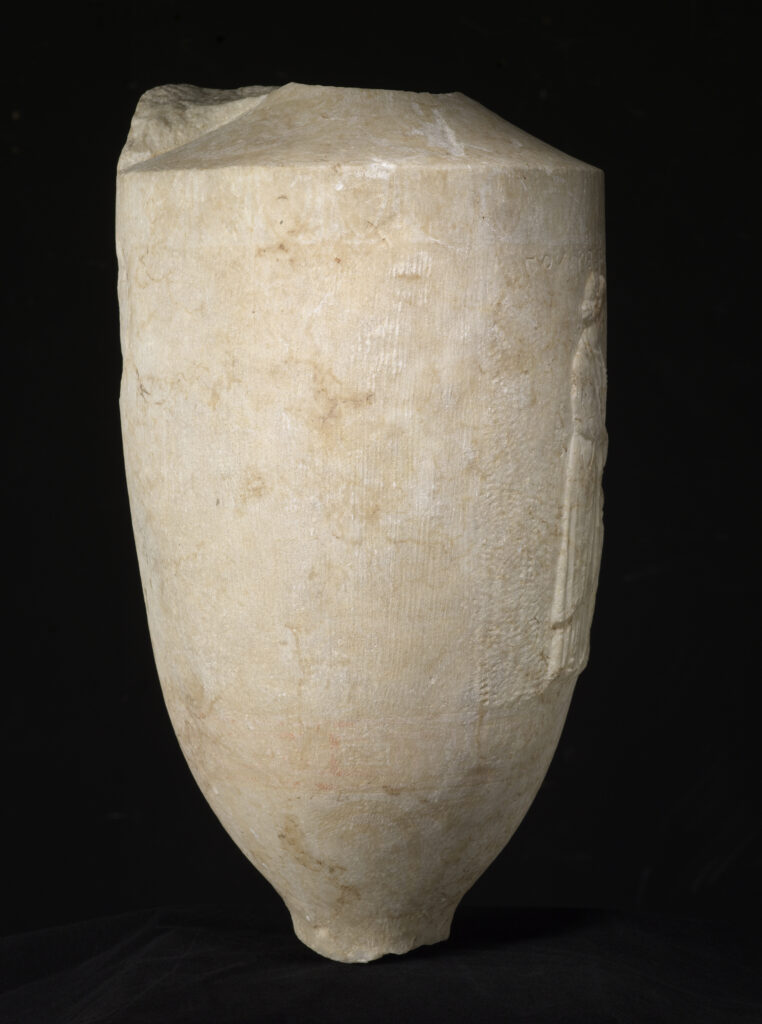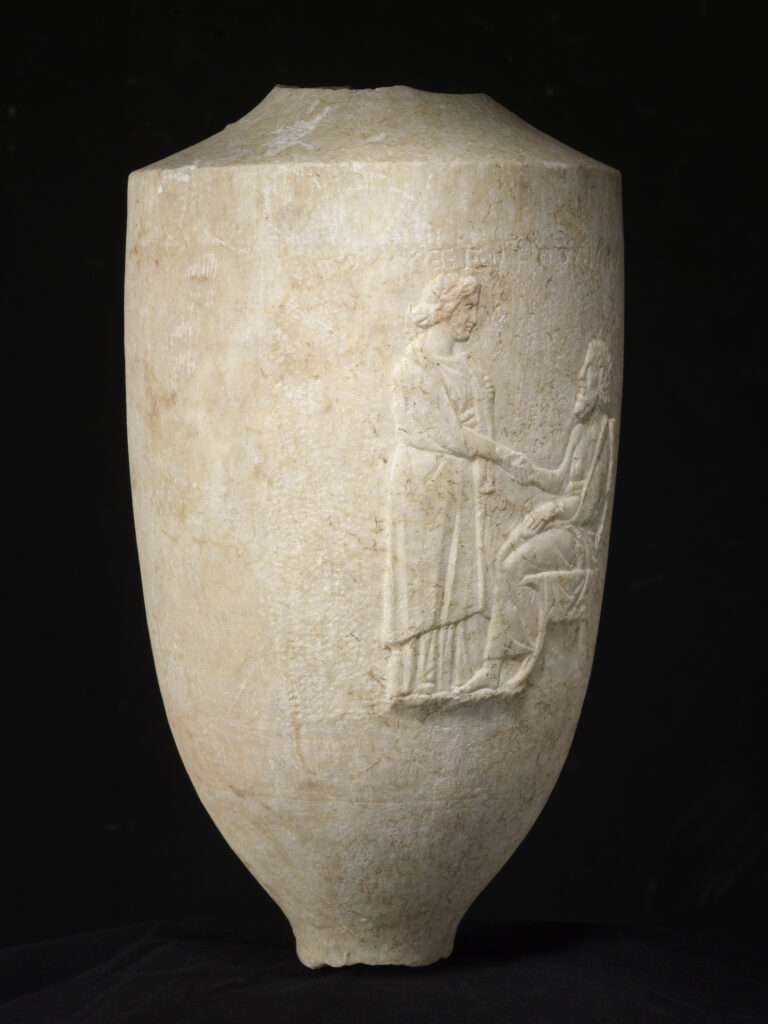Lekythos (work of art)
Artwork Info
About
Key Ideas about this Work of Art
- A lekythos is a narrow type of jug used by the ancient Greeks to store oils and ointments.
- Lekythoi (plural form of lekythos) were commonly used in ancient Greece as portable flasks for olive oil. They were often used at baths and gymnasiums and for funeral offerings.
- The man and woman depicted on this lekythos are shaking hands. This symbolic gesture appears on many ancient Greek artifacts.
- The decorations on lekythoi often depicted scenes from daily life or rituals. The vessels used at funerals often depicted scenes of loss or departure.
- This large lekythos would have served as a burial monument or grave marker.
- The vessel is made from a type of Greek marble that is white but looks golden in sunlight.
Learn More
This lekythos features an engraving of a man and a woman. The inscription lists their names. The man sitting in the chair is Polyarchos. The woman shaking his hand is Polyxena. Their relationship to one another is unknown. The handshake depicted on this lekythos had a special meaning in ancient Greece. The Greeks referred to a handshake as dexiosis, or “engagement of the right hand.” Dexiosis was practiced in ancient Greece instead of bowing or curtsying. The gesture of shaking hands showed that both people were equal, they had no weapons, and they felt at ease with each other. The handshake motif appears on many ancient Greek graves and vases. It represented different things, from marriage to peace offerings to funerals. On funerary (burial-related) objects, the deceased person was usually shown in a seated position, clasping the hand of a standing survivor (often the spouse). This gesture was seen as a farewell.
The most common lekythoi were small terracotta vessels that held oil for funerary rituals. Their main features included a long neck and cylinder-shaped body that rested on a flat base. In the late 400s and early 300s BCE, larger versions of the vessels were made and used as grave markers. The oversized lekythos served as a memorial of the offering of oil to the deceased. The size of this lekythos indicates that it was used as a family funerary monument or grave marker. It was a standard type of funerary monument in Athens and the larger region of Attica.
This lekythos is made from Pentelic marble. It is named for Mount Pentelicus (a mountain in Attica, Greece), where it was produced. Pentelic marble is white, with a yellow tint that makes it appear golden in sunlight. Many large monuments built in Athens after the fifth century BCE were made from Pentelic marble.
Additional Resources
Resources for Teachers:
- View another lekythos from the Getty Museum.
- Watch a video to learn how to make a lekythos.
Resources for Students:
- View another lekythos from the British Museum.
- Watch a video about a funerary lekythos.
- View another lekythos from the University of Colorado Boulder.





